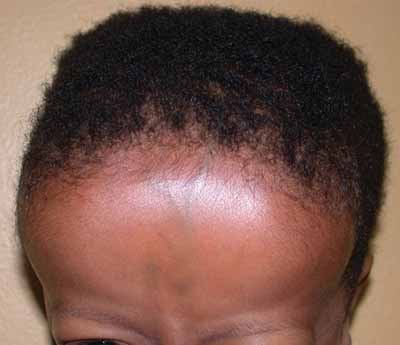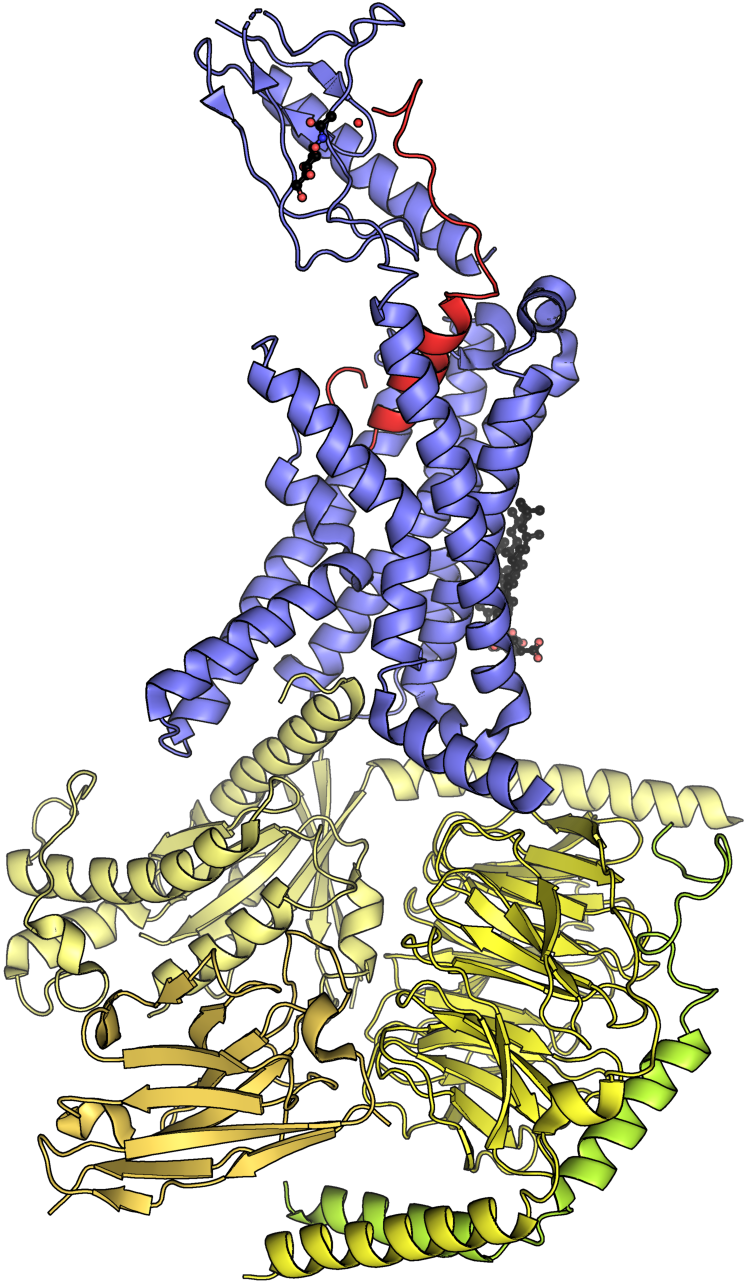|
Paget's Disease Of Bone
Paget's disease of bone (commonly known as Paget's disease or, historically, osteitis deformans) is a condition involving Bone remodeling, cellular remodeling and deformity of one or more bones. The affected bones show signs of dysregulated bone remodeling at the microscopic level, specifically excessive Osteoclast, bone breakdown and subsequent disorganized new bone formation. These structural changes cause the bone to weaken, which may result in deformity, pain, bone fractures, fracture or arthritis of associated joints. The exact cause is unknown, although leading theories indicate both genetic and acquired factors (see #Causes, Causes). Paget's disease may affect any one or several bones of the body (most commonly pelvis, tibia, femur, lumbar vertebrae, and skull), but never the entire skeleton, and does not spread from bone to bone. Rarely, a bone affected by Paget's disease can transform into a Osteosarcoma, malignant bone cancer. As the disease often affects people diffe ... [...More Info...] [...Related Items...] OR: [Wikipedia] [Google] [Baidu] |
Hemiparesis
Hemiparesis, also called unilateral paresis, is the weakness of one entire side of the body (''wikt:hemi-#Prefix, hemi-'' means "half"). Hemiplegia, in its most severe form, is the complete paralysis of one entire side of the body. Either hemiparesis or hemiplegia can result from a variety of medical causes, including congenital conditions, trauma, tumors, traumatic brain injury and stroke.Detailed article about hemiparesis at Disabled-World.com Signs and symptoms Different types of hemiparesis can impair different bodily functions. Some effects, such as weakness or partial paralysis of a limb on the affected side, are generally always to be expected. Other impairments can appear, upon external examination, to be unrelated to the limb weakness, but are nevertheless also cau ...[...More Info...] [...Related Items...] OR: [Wikipedia] [Google] [Baidu] |
Lumbar Vertebrae
The lumbar vertebrae are located between the thoracic vertebrae and pelvis. They form the lower part of the back in humans, and the tail end of the back in quadrupeds. In humans, there are five lumbar vertebrae. The term is used to describe the anatomy of humans and quadrupeds, such as horses, pigs, or cattle. These bones are found in particular cuts of meat, including tenderloin or sirloin steak. Human anatomy In human anatomy, the five vertebrae are between the rib cage and the pelvis. They are the largest segments of the vertebral column and are characterized by the absence of the foramen transversarium within the transverse process (since it is only found in the cervical region) and by the absence of facets on the sides of the body (as found only in the thoracic region). They are designated L1 to L5, starting at the top. The lumbar vertebrae help support the weight of the body, and permit movement. General characteristics The adjacent figure depicts the general cha ... [...More Info...] [...Related Items...] OR: [Wikipedia] [Google] [Baidu] |
Deafness
Deafness has varying definitions in cultural and medical contexts. In medical contexts, the meaning of deafness is hearing loss that precludes a person from understanding spoken language, an audiological condition. In this context it is written with a lower case ''d''. It later came to be used in a cultural context to refer to those who primarily communicate with a deafness aid or through sign language regardless of hearing ability, often capitalized as ''Deaf'' and referred to as "big D Deaf" in speech and sign. The two definitions overlap but are not identical, as hearing loss includes cases that are not severe enough to impact spoken language comprehension, while cultural Deafness includes hearing people who use sign language, such as children of deaf adults. Medical context In a medical context, deafness is defined as a degree of hearing difficulties such that a person is unable to understand speech, even in the presence of amplification. In profound deafness, eve ... [...More Info...] [...Related Items...] OR: [Wikipedia] [Google] [Baidu] |
Headache
A headache, also known as cephalalgia, is the symptom of pain in the face, head, or neck. It can occur as a migraine, tension-type headache, or cluster headache. There is an increased risk of Depression (mood), depression in those with severe headaches. Headaches can occur as a result of many conditions. There are a number of different classification systems for headaches. The most well-recognized is that of the International Headache Society, which classifies it into more than 150 types of Primary headache disorder, primary and secondary headaches. Causes of headaches may include dehydration; fatigue; sleep deprivation; Stress (biology), stress; the effects of medications (overuse) and recreational drugs, including withdrawal; viral infections; loud noises; head injury; rapid ingestion of a very cold food or beverage; and dental or sinus issues (such as sinusitis). Treatment of a headache depends on the underlying cause, but commonly involves analgesic, pain medication (esp ... [...More Info...] [...Related Items...] OR: [Wikipedia] [Google] [Baidu] |
Macrocephaly
Macrocephaly is a condition in which circumference of the human head is abnormally large. It may be pathological or harmless, and can be a Heredity, familial genetic characteristic. People diagnosed with macrocephaly will receive further medical tests to determine whether the syndrome is accompanied by particular Disorder (medicine), disorders. Those with benign or familial macrocephaly are considered to have megalencephaly. Causes Many people with abnormally large heads or large skulls are healthy, but macrocephaly may be pathological. Pathologic macrocephaly may be due to megalencephaly (enlarged brain), hydrocephalus (abnormally increased cerebrospinal fluid), cranial hyperostosis (bone overgrowth), and other conditions. Pathologic macrocephaly is called "syndromic", when it is associated with any other noteworthy condition, and "nonsyndromic" otherwise. Pathologic macrocephaly may be caused by congenital anatomic abnormalities, genetic conditions, or by environmental events. ... [...More Info...] [...Related Items...] OR: [Wikipedia] [Google] [Baidu] |
Skull Bossing
Skull bossing is a descriptive term in medical physical examination indicating a protuberance of the skull, most often in the frontal bones of the forehead ("frontal bossing"). Although prominence of the skull bones may be normal, skull bossing may be associated with certain medical conditions, including nutritional, metabolic, hormonal, and hematologic disorders. Frontal bossing Frontal bossing is the development of an unusually pronounced forehead which may also be associated with a heavier than normal brow ridge. It is caused by enlargement of the frontal bone, often in conjunction with abnormal enlargement of other facial bones, skull, mandible, and bones of the hands and feet. Frontal bossing may be seen in a few rare medical syndromes such as acromegaly – a chronic medical disorder in which the anterior pituitary gland produces excess growth hormone (GH). Frontal bossing may also occur in diseases resulting in chronic anemia, where there is increased hematopoiesis and enl ... [...More Info...] [...Related Items...] OR: [Wikipedia] [Google] [Baidu] |
Bone Pain
Bone pain (also known medically by several other names) is pain coming from a bone, and is caused by damaging stimuli. It occurs as a result of a wide range of diseases or physical conditions or both, and may severely impair the quality of life.Luger, N. Mach, D. Sevcik, M. Mantyh, P. (2005). Bone cancer pain: From mechanism to model to therapy. ''Journal of Pain and Symptom Management''. 29(5): 32-46. Bone pain belongs to the class of deep somatic pain, often experienced as a dull pain that cannot be localized accurately by the patient. This is in contrast with the pain which is mediated by superficial receptors in, e.g., the skin. Bone pain can have several possible causes ranging from extensive physical stress to serious diseases such as cancer.Zwas, T. Elkanovitch, R. George, F. (1987). Interpretation and Classification of Bone Scintigraphic Findings in Stress Fractures. ''Journal of Nuclear Medicine''. 28: 452-457.Mantyh, P. Clohisy, D. Koltzenburg, M. Hunt, S. (2002). Mole ... [...More Info...] [...Related Items...] OR: [Wikipedia] [Google] [Baidu] |
Incidental Findings
Incidental medical findings are previously undiagnosed medical or psychiatric conditions that are discovered unintentionally and during evaluation for a medical or psychiatric condition. Such findings may occur in a variety of settings, including routine medical care, during biomedical research, during post-mortem autopsy, or during genetic testing. Medical imaging An incidentaloma is a tumor found by coincidence which is often benign and does not cause any clinically significant symptoms; however a small percentage do turn out to be malignant. Incidentalomas are common, with up to 7% of all patients over 60 harboring a benign growth, often of the adrenal gland, which is detected when radiology, diagnostic imaging is used for the analysis of unrelated symptoms. As 37% of patients receiving whole-body CT scan may have abnormal findings that need further evaluation and with the increase of "whole-body CT scanning" as part of health screening programs, the chance of finding inciden ... [...More Info...] [...Related Items...] OR: [Wikipedia] [Google] [Baidu] |
Sir James Paget
Sir James Paget, 1st Baronet FRS HFRSE (11 January 1814 – 30 December 1899) (, rhymes with "gadget") was an English surgeon and pathologist who is best remembered for naming Paget's disease and who is considered, together with Rudolf Virchow, as one of the founders of scientific medical pathology. His famous works included ''Lectures on Tumours'' (1851) and ''Lectures on Surgical Pathology'' (1853). There are several medical conditions which were described by, and later named after, Paget: * Paget's disease of bone * Paget's disease of the nipple (a form of intraductal breast cancer spreading into the skin around the nipple) ** Extramammary Paget's disease refers to a group of similar, more rare skin lesions discovered by Radcliffe Crocker in 1889 which affect the male and female genitalia. * Paget–Schroetter disease * Paget's abscess, an abscess that recurs at the site of a former abscess which had resolved. Life Paget was born in Great Yarmouth, England, on 11 Jan ... [...More Info...] [...Related Items...] OR: [Wikipedia] [Google] [Baidu] |
Saunders
Saunders is a surname of English and Scottish origin, derived from ''Sander'', a mediaeval form of Alexander.See also: Sander (name) People * Ab Saunders (1851–1883), American cowboy and gunman * Al Saunders (born 1947), American football coach * Alan Saunders (broadcaster) (1954–2012), broadcaster for the Australian Broadcasting Corporation * Alan Saunders (police officer) (1886–1964), Inspector-General of Police in Palestine, 1937–1943 * Alan Saunders (public servant) (1892–1957), English public servant and cricketer * Albert Charles Saunders (1874–1943), Canadian politician * Alfred Saunders (1820–1905), New Zealand politician * Alfred Thomas Saunders (1854–1940), generally known as A. T. Saunders, South Australian historian * Alfred William Saunders (1888–1930), Irish soldier who served the United Kingdom in World War I * Alison Saunders (born 1961), British barrister and Director of Public Prosecutions * Allen Saunders (1899–1986), American cart ... [...More Info...] [...Related Items...] OR: [Wikipedia] [Google] [Baidu] |
Calcitonin
Calcitonin is a 32 amino acid peptide hormone secreted by parafollicular cells (also known as C cells) of the thyroid (or endostyle) in humans and other chordates in the ultimopharyngeal body. It acts to reduce blood calcium (Ca2+), opposing the effects of parathyroid hormone (PTH). Its importance in humans has not been as well established as its importance in other animals, as its function is usually not significant in the regulation of normal Calcium metabolism, calcium homeostasis. It belongs to the calcitonin-like protein family. Historically calcitonin has also been called thyrocalcitonin. Biosynthesis and regulation Calcitonin is formed by the proteolytic cleavage of a larger prepropeptide, which is the product of the CALC1 gene (). It is functionally an antagonist with PTH and Vitamin D3. The CALC1 gene belongs to a superfamily of related protein hormone precursors including islet amyloid precursor protein, calcitonin gene-related peptide, and the precursor of adrenomedul ... [...More Info...] [...Related Items...] OR: [Wikipedia] [Google] [Baidu] |






